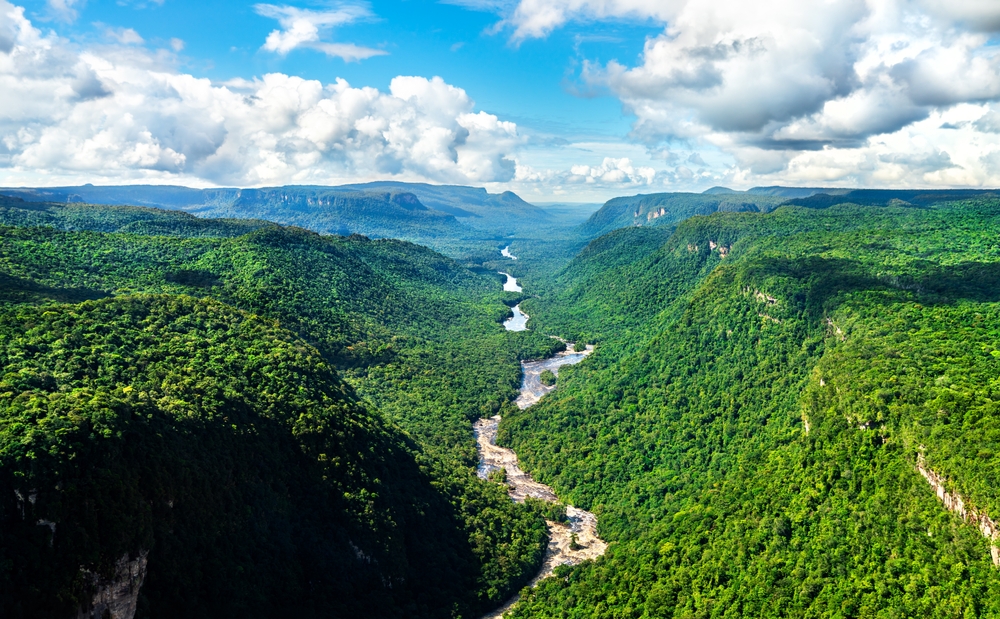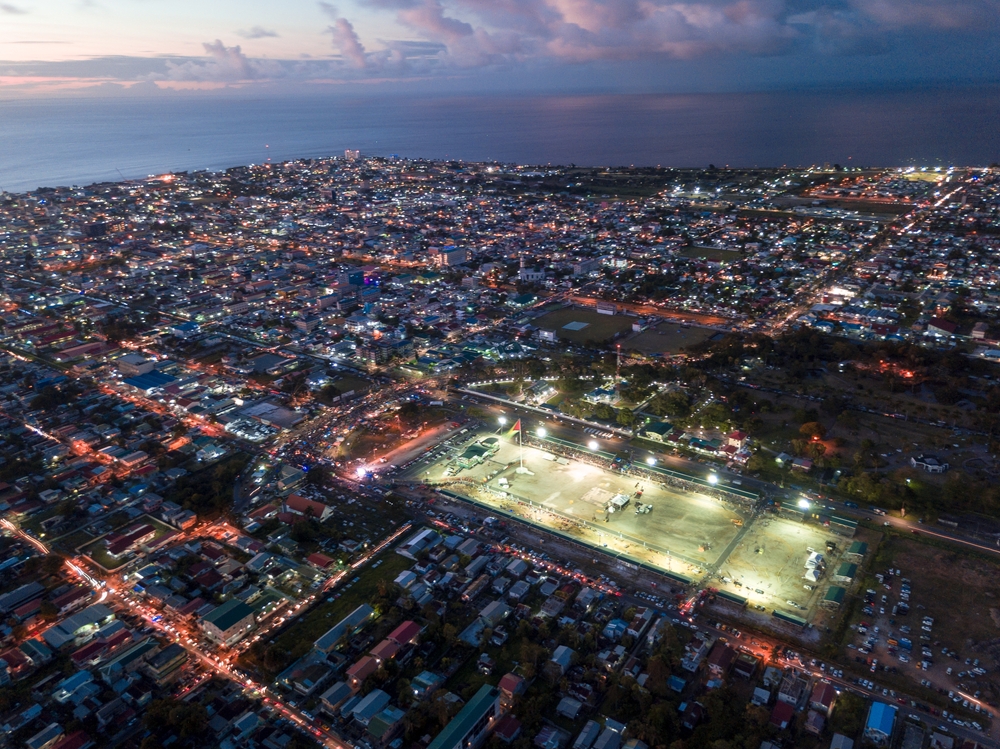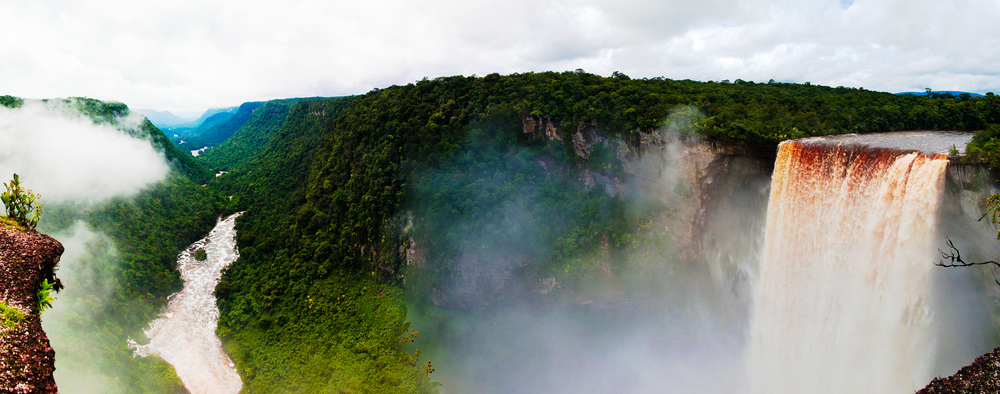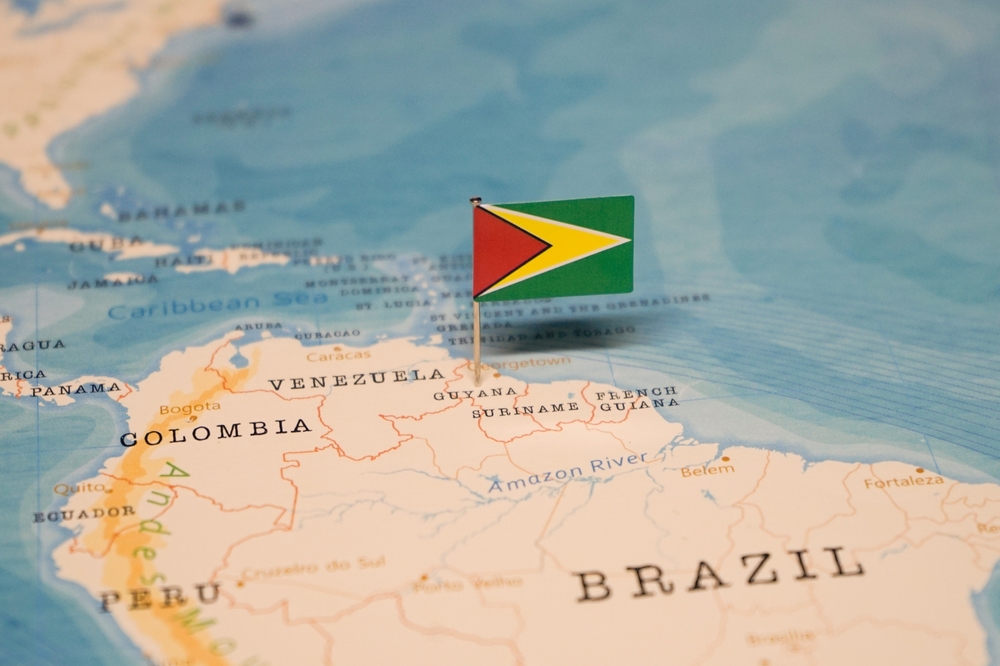
We rarely question where our food comes from—until the shelves go empty. A ripe avocado in a northern city in January, sushi-grade tuna flown in overnight, spices from across the globe all blended into a single dish. Modern life has trained us to expect abundance, variety, and convenience. But beneath that polished surface lies a system that is anything but stable. The moment trade routes falter, crops fail, or diplomacy fractures, the illusion begins to crumble. Suddenly, food isn’t just about taste or preference—it’s about survival.
What if, overnight, your country had to live solely off its own land? No imports. No global safety net. Could it feed its people? A recent study posed that very question—and revealed an unsettling truth: almost no nation on Earth can. Except one. Not the world’s superpowers or tech-driven economies, but a small, forested country many have never thought twice about—Guyana. Its quiet self-sufficiency stands in sharp contrast to the global giants that depend on fragile supply chains to survive.

The Illusion of Self-Sufficiency in a Globalized World
Imagine waking up tomorrow in a world where your country had to survive solely on what it could grow, raise, or catch within its own borders. No imports, no trade routes, no international aid—just the land beneath your feet and whatever food systems your nation had managed to build. It sounds like a theoretical survival challenge, but it’s not as far-fetched as it seems. Global crises—from pandemics to political tensions to climate disruptions—can fracture supply chains in an instant. A recent study published in Nature Food analyzed 186 countries and asked a simple question: could they meet their own population’s nutritional needs without relying on outside help? The results are sobering. Only one country—Guyana—could fully sustain itself across all seven essential food categories: grains, fruits, vegetables, meat, dairy, legumes, and fats.
Guyana, a small South American nation of less than a million people, stands alone in this regard. Larger, more industrialized countries like China and Vietnam came close, able to self-produce six of the seven groups, but they still fell short. The majority of nations couldn’t even meet half. Over a third can’t cover three categories, and six—including the UAE, Yemen, and Afghanistan—couldn’t fulfill a single one. The reasons vary: urban overdevelopment, climate limitations, population pressures, and policy priorities all play a role. But the core insight is clear—most modern countries have built their food systems not on local resilience, but on global interdependence. It’s a system that works well—until it doesn’t. Break one crucial trade link, and entire food categories can disappear overnight, as we’ve seen when tariffs are imposed or trade routes are politically disrupted.
The lesson here isn’t that countries should wall themselves off in pursuit of total self-sufficiency. On the contrary, as the study’s lead author Jonas Stehl notes, sustainability in the 21st century requires diversification and cooperation. Nations should invest in producing more of what they can domestically—not as an act of isolationism, but as a form of resilience. At the same time, maintaining strong, stable trade relationships is vital. Some nations depend on a single partner for over half their food imports, a geopolitical gamble that could backfire with a single policy shift. Food security, then, is not just about farming—it’s about diplomacy, foresight, and the humility to acknowledge that no country, however powerful, can afford to go it alone.

Fragile Abundance — How Modern Convenience Masks Real Vulnerability
We live in an age of unparalleled abundance—or so it seems. Supermarket aisles stretch endlessly with global offerings: strawberries in winter, quinoa from Peru, salmon flown in from Norway. But this illusion of limitless choice is a carefully orchestrated feat of global logistics, not local strength. Most of us are profoundly disconnected from the sources of our food, relying on imports and invisible networks that work—until they don’t. When global shipping falters or fuel prices spike, when a drought wipes out a single export crop or political instability erupts in a food-producing region, the ripple effects travel faster than we realize. The COVID-19 pandemic briefly pulled back the curtain on just how precarious our food systems really are. Panic-buying, empty shelves, and disrupted supply chains offered a glimpse of what happens when a global system wobbles—and that was with trade routes still mostly intact.
The reality is that much of the world’s food security hinges not on agricultural output, but on the smooth operation of international agreements, supply chains, and diplomatic relationships. For example, many Gulf nations import over 90% of their food, with just a few nations like India or Brazil serving as critical suppliers. If those relationships were strained—whether by sanctions, wars, or climate-related disasters—the consequences would be swift and devastating. It’s not just about hunger, either. Political unrest, economic decline, and forced migration often follow in the wake of food shortages. When food becomes scarce, it doesn’t just strain stomachs—it strains entire societies. We’ve seen this dynamic unfold in places like Venezuela and parts of the Horn of Africa, where food insecurity has been both a symptom and a driver of deeper instability.
Despite this, global policies rarely treat food like the strategic asset it truly is. Energy independence garners national investment and debate; food security, by contrast, is often an afterthought, tucked behind other economic priorities. Yet the two are deeply interconnected. Fertile land can’t produce without fuel. Farmers can’t harvest without infrastructure. And nations can’t plan for long-term prosperity if they depend entirely on external partners for something as fundamental as nourishment. The more complex and interconnected our systems become, the more we must confront this paradox: modern food abundance is built on fragile foundations. And unless we start rethinking how we define strength—less about GDP, more about resilience—we may find ourselves rich in options but poor in actual security.

The Myth of Scale — Why Bigger Isn’t Always Stronger
It’s easy to assume that large, industrialized nations are naturally better equipped to feed themselves. With vast farmland, cutting-edge technology, and billion-dollar agribusinesses, countries like the United States, China, and India should be the most food-secure, right? But scale alone doesn’t guarantee resilience. In fact, it can often mask deep inefficiencies and dependencies. Take the United States: despite being one of the largest agricultural producers in the world, it still relies heavily on global supply chains for key food categories—fruits from Mexico, seafood from Southeast Asia, spices from India. Much of the land is devoted to monocultures like corn and soy, grown not to nourish people directly, but to feed livestock or produce biofuel. Meanwhile, fresh produce, which offers the most nutritional value, is often imported or grown in regions increasingly vulnerable to drought and wildfires.
This centralization of food production creates bottlenecks that are vulnerable to disruption. A single extreme weather event in California’s Central Valley can wipe out a significant portion of the nation’s lettuce or almond supply. A strike at a major port can stall thousands of shipments of perishable goods. These vulnerabilities reveal a painful truth: having more land, more technology, or more money doesn’t automatically translate into sustainable food security. When production is concentrated, and supply chains stretch thousands of miles, the whole system becomes brittle. Local farmers and regional food systems, which once formed the backbone of national food resilience, are often sidelined in favor of global efficiency and profit margins.

Contrast this with Guyana, the world’s only fully self-sufficient nation in the recent study. Its strength lies not in its size, but in its scale: small population, diverse agriculture, and consumption patterns that align with local capacity. It produces within its means and eats within its borders. There’s a lesson here that cuts across economics and politics: resilience doesn’t come from being the biggest or most advanced—it comes from being adaptable, intentional, and in balance with what your environment can realistically support. In a world obsessed with growth, this kind of restraint might seem unambitious. But in terms of food security, it may be the most powerful form of strength we have yet to fully appreciate.
Climate, Conflict, and the Coming Reckoning
As climate change accelerates and geopolitical tensions rise, the weaknesses in our global food system are becoming impossible to ignore. Droughts, floods, and shifting growing seasons are already reducing yields in regions that once fed millions. In 2022, for example, severe droughts slashed wheat production across parts of Europe and China, driving up prices globally and sparking food insecurity in nations heavily reliant on those imports. Meanwhile, war in Ukraine—one of the world’s top grain exporters—has further disrupted the flow of essential staples like wheat and sunflower oil, especially to countries in Africa and the Middle East that depend on them. These aren’t distant problems—they are direct threats to the stability of the global food web, and by extension, to human well-being everywhere.
Conflicts don’t just destroy infrastructure—they destroy trust, which is even harder to rebuild. Once a nation becomes viewed as an unreliable trade partner, others begin to hedge their bets, hoard supplies, or form new alliances, creating further volatility. The global food market becomes not a shared safety net, but a high-stakes poker game, where the most vulnerable always lose. And when governments respond with protectionist policies—such as export bans on rice, wheat, or fertilizers—they may shield their own people temporarily, but they worsen shortages for everyone else. As global temperatures rise and water becomes scarcer, these patterns are likely to intensify. What we are facing is not just a food distribution crisis, but a food diplomacy crisis—where hunger and instability travel faster than the crops themselves.
Against this backdrop, the call for food sovereignty becomes more urgent. But it must be rooted in realism, not ideology. True food sovereignty doesn’t mean every nation must grow every crop—it means having the power to shape your own food system in a way that’s resilient, equitable, and ecologically sound. It means investing in climate-smart agriculture, reducing dependence on fragile supply chains, and building food policies that prioritize nutrition and long-term sustainability over short-term profits. Most importantly, it means recognizing that food security is not just an agricultural issue—it’s a political, environmental, and moral one. And like any global challenge, it demands both local action and global cooperation, not isolationism masquerading as strength.
Rethinking Strength — A Call to Cultivate Resilience, Not Just Abundance
In a world fixated on scale, speed, and surplus, it’s easy to overlook the quiet power of sufficiency. But as the research on food self-sufficiency shows, true strength lies not in domination over nature or dependence on sprawling trade empires, but in the ability to endure. That endurance—whether at the level of a household, a community, or a nation—comes from thoughtful choices: investing in local food systems, protecting agricultural biodiversity, and fostering cooperative trade relationships rooted in trust, not leverage. The lesson is as much personal as it is political. What we eat, how we consume, and where we place our value—on convenience or on connection—shapes the system we are all a part of.
This is not a romantic call to return to subsistence farming or shun global trade. It is a challenge to think critically about the fragility hidden behind our modern conveniences and to ask ourselves whether we are building food systems that can actually withstand the shocks we know are coming. Resilience doesn’t mean doing everything alone; it means knowing what you can rely on and having the humility to strengthen what you can, while collaborating where you must. Guyana may be the statistical outlier today, but its example reveals a universal truth: thriving within limits is not weakness—it’s wisdom.
We often think of food as a personal choice or a cultural expression, but it is also a mirror of our values as a society. Do we prize efficiency over equity? Short-term gain over long-term sustainability? If we want a future where abundance doesn’t vanish with the next drought or dispute, we need to start asking harder questions now. Not just about how much we produce, but about how fairly we share it, how sustainably we grow it, and how resiliently we prepare for what’s ahead. Our plates are political, ecological, and deeply personal. And the choices we make today—individually and collectively—will determine who eats tomorrow, and at what cost.
Loading...

